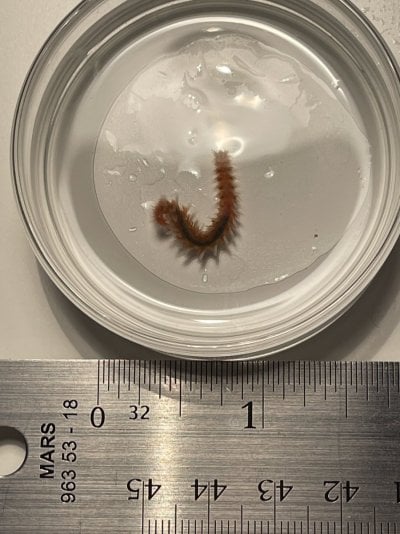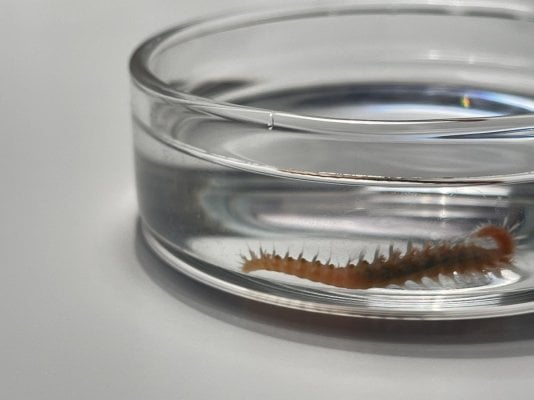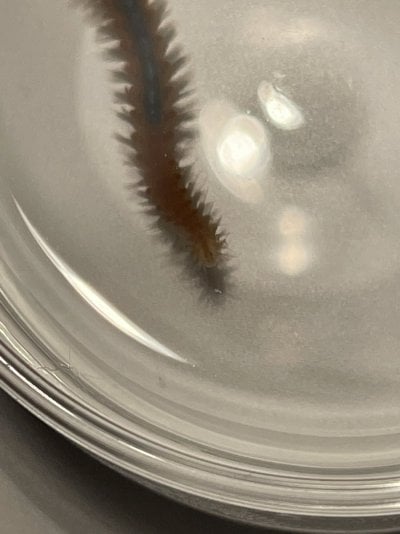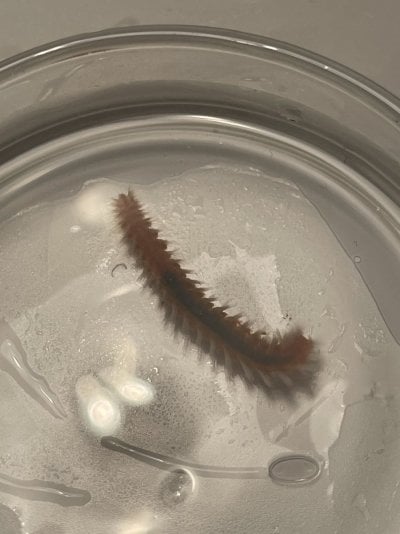Navigation
Install the app
How to install the app on iOS
Follow along with the video below to see how to install our site as a web app on your home screen.
Note: This feature may not be available in some browsers.
More options
You are using an out of date browser. It may not display this or other websites correctly.
You should upgrade or use an alternative browser.
You should upgrade or use an alternative browser.
Bristleworm ID
- Thread starter mikemathis555
- Start date
-
- Tags
- bristle worm
- Tagged users None
i cant think
Wrasse Addict
View Badges
Excellence Award
Reef Tank 365
Article Contributor
UK Reef Club Member
Rock Pool Reef Keepers
My Tank Thread
My Aquarium Showcase
To me that’s a fireworm, I have no idea if they’re like their close relatives though
Looks like a regular bristleworm to me.
Bristleworm and fireworm are close relatives.
That looks like a bristle to me. Bristles are helpful detritovores.
That looks like a bristle to me. Bristles are helpful detritovores.
I don't see a distinctive caruncle on the picture of its head so yep bristleworm. A bearded fireworm has a obvious caruncle on its head (red feathery looking thing). I think that's a Eurythoe complanata which is listed online as a fireworm, but it's not the unwanted bearded fireworm (Hermodice carunculata).A few more pictures…hard to get a great shot with my iPhone.
It looks like a regular bristleworm to me.
From what I've read, the most distinct way to verify identification is by comparing details on the head.
I'm a bit late, @Gtinnel already added better details on identification.
From what I've read, the most distinct way to verify identification is by comparing details on the head.
I'm a bit late, @Gtinnel already added better details on identification.
So here is the big question…if it’s a bristleworm, do I put it back in my tank? I’m guessing this is a point of debate in the community.
I have a fairly small 13.5 Fluval tank, and I’m afraid this thing will grow too large. I have two easily spooked fish (Firefish and watchman goby) who primarily live in the rock. I also have plenty of snails who do an ample clean up job - especially on my detritus load.
I have a fairly small 13.5 Fluval tank, and I’m afraid this thing will grow too large. I have two easily spooked fish (Firefish and watchman goby) who primarily live in the rock. I also have plenty of snails who do an ample clean up job - especially on my detritus load.
Most young bristle worms have more of a red look as they get bigger the red is less noticeable and they are more peachy color
I have unfortunately spent wayyy too much time staring at pictures of worms online since starting in this hobby.It looks like a regular bristleworm to me.
From what I've read, the most distinct way to verify identification is by comparing details on the head.
I'm a bit late, @Gtinnel already added better details on identification.
You're right that it is heavily debated. If a regular bristle (which I'm almost positive it is) then since it came out of your tank there are almost certainly more in there. If in doubt the safe choice is to always throw it out.So here is the big question…if it’s a bristleworm, do I put it back in my tank?
If it were me I'd probably put it back.
It is a matter of debate, but, considering just a few days ago I spent half an hour picking bristleworms out of cyanobacteria and algae I was removing from the tank to add the bristleworms back into the tank, you know which side I am on.So here is the big question…if it’s a bristleworm, do I put it back in my tank? I’m guessing this is a point of debate in the community.
I have a fairly small 13.5 Fluval tank, and I’m afraid this thing will grow too large. I have two easily spooked fish (Firefish and watchman goby) who primarily live in the rock. I also have plenty of snails who do an ample clean up job - especially on my detritus load.
I have heard of cases where bristleworms multiply to huge populations, but this seems to be a direct result to excessive nutrients due to over-feeding and/or over-stocking.
I used to have tons of them. When I'd broadcast feed reef roids they would crawl out of every hole in every rock and from the sandbed. It was amazing and creepy all at the same time. Since getting my wrasse I don't see them nearly as often. They do have a sanctuary in my sump in the refugium section where there are a lot of them. I just figure they help eat some of the stuff that's in the inch of so of mulm down there.It is a matter of debate, but, considering just a few days ago I spent half an hour picking bristleworms out of cyanobacteria and algae I was removing from the tank to add the bristleworms back into the tank, you know which side I am on.
I have heard of cases where bristleworms multiply to huge populations, but this seems to be a direct result to excessive nutrients due to over-feeding and/or over-stocking.
The one thing I’m sure about is that I don’t have an urgent need for that one worm to be a part of my CUC. If it is a bristleworm, sounds like I probably have more of them in there anyway.
I’ll politely show it the door.
I’ll politely show it the door.
No problem putting it back in, but it won’t really make a difference.
Second! It’s probably a generic bristle worm.You're right that it is heavily debated. If a regular bristle (which I'm almost positive it is) then since it came out of your tank there are almost certainly more in there. If in doubt the safe choice is to always throw it out.
If it were me I'd probably put it back.
- Joined
- Jun 4, 2020
- Messages
- 1,945
- Reaction score
- 1,324
It’s not a bearded fireworm in my opinion but the bristles are super stark white for it to be a common bristle worm. It’s also very thick for a bristle. I’d say some type of fireworm but no the coral eating kind. If it was me I’d murder the crap outta that and any others like it
Similar threads
- Replies
- 2
- Views
- 161
- Replies
- 9
- Views
- 263






















